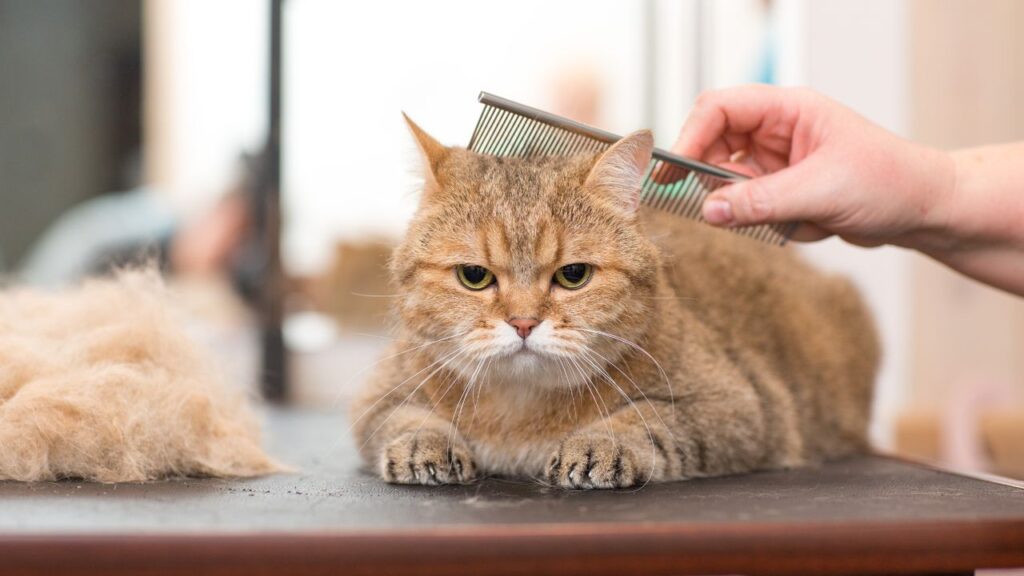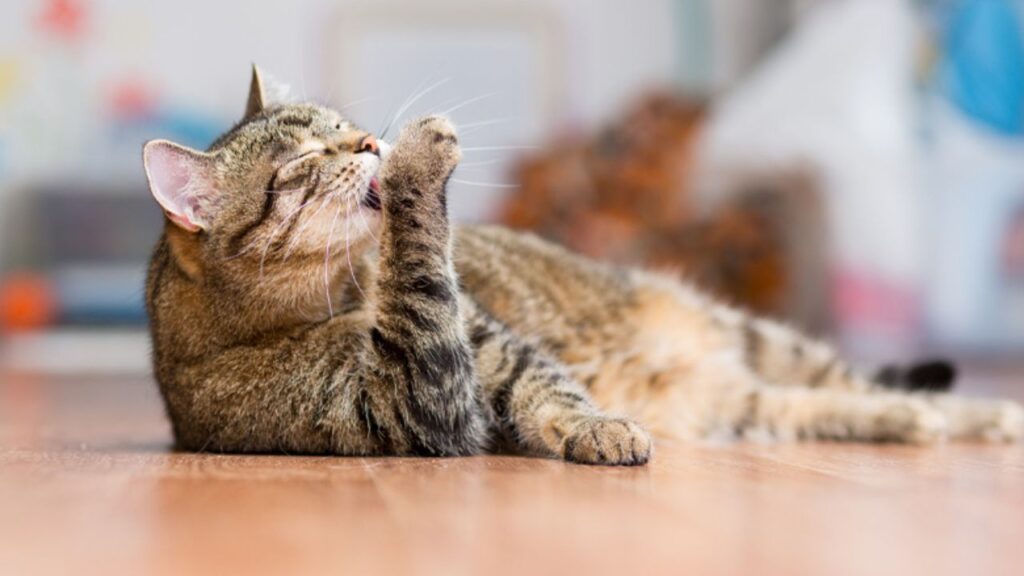Have you ever watched your cat groom itself meticulously, only to find those pesky hairballs the next day? How can I prevent hairballs in my cat? is a common question among cat owners striving to keep their furry friends comfortable and healthy. Understanding the causes and implementing effective strategies can make a significant difference in your cat’s well-being.
Contents
- 1 Understanding Hairballs in Cats
- 2 Preventive Measures to Reduce Hairballs
- 3 Lifestyle Adjustments for Hairball Prevention
- 4 Understanding Cat Behavior Related to Hairballs
- 5 Choosing the Right Cat Breed for Minimal Hairballs
- 6 Adopting a Cat: Tips to Prevent Hairballs
- 7 Daily Care Routine to Minimize Hairballs
- 8 Frequently Asked Questions (FAQs)
- 9 Conclusion: How Can I Prevent Hairballs in My Cat
Understanding Hairballs in Cats
What Are Hairballs?
Hairballs, or trichobezoars, are clumps of fur that cats ingest during grooming. While occasional hairballs are normal, frequent occurrences can indicate underlying issues with cat health or grooming habits.
Why Do Cats Develop Hairballs?
Cats naturally groom themselves to stay clean, but this process can lead to hair ingestion. Factors contributing to hairball formation include:
- Long-haired breeds: Persians, Maine Coons, and other long-haired cats tend to ingest more fur.
- Grooming frequency: Cats that groom excessively may accumulate more hair.
- Diet: Poor nutrition can affect coat health, leading to more shedding and hair ingestion.
- Stress and anxiety: Behavioral issues can increase grooming, resulting in more hairballs.

Preventive Measures to Reduce Hairballs
Regular Grooming
One of the most effective ways to prevent hairballs is by maintaining a regular grooming routine. Here’s how:
- Brush Daily: Use a suitable brush for your cat’s coat type to remove loose fur. This reduces the amount of hair your cat ingests during self-grooming.
- Use Deshedding Tools: Tools like the Furminator can help capture more undercoat hair, minimizing shedding.
Balanced Diet and Hydration
A well-balanced diet plays a crucial role in reducing hairballs.
- High-Quality Food: Choose cat food rich in essential nutrients that support skin and coat health. Omega-3 and Omega-6 fatty acids are particularly beneficial.
- Hairball-Controlled Food: Many commercial cat foods are formulated to help reduce hairballs by including higher fiber content to aid digestion.
- Hydration: Ensure your cat has access to fresh water at all times. Proper hydration helps maintain a healthy digestive system, facilitating the passage of ingested hair.
Specialized Supplements
Supplements can aid in preventing hairballs by improving coat condition and digestion.
- Fiber Supplements: Adding fiber to your cat’s diet can help move ingested hair through the digestive tract more efficiently.
- Hairball Remedies: Over-the-counter products like hairball gels can lubricate the digestive system, making it easier for hair to pass through.
Regular Veterinary Check-ups
Regular visits to the veterinarian ensure that any underlying health issues contributing to hairballs are addressed promptly.
- Health Assessments: Routine check-ups can detect skin conditions or gastrointestinal problems that may increase hairball risk.
- Professional Advice: Your vet can recommend specific cat health tips tailored to your cat’s needs.
Lifestyle Adjustments for Hairball Prevention
Environmental Enrichment
A stimulating environment can reduce stress and anxiety, minimizing excessive grooming.
- Interactive Toys: Provide toys that engage your cat’s hunting instincts to keep them active and distracted from over-grooming.
- Scratching Posts: Encourage healthy scratching habits to prevent boredom and stress-related grooming.
Managing Shedding
Managing your cat’s shedding can significantly impact hairball prevention.
- Regular Baths: For some cats, occasional baths can help reduce loose fur. Consult your vet before introducing baths to your routine.
- Shedding Seasons: Pay extra attention to grooming during shedding seasons to manage increased hair loss.
Understanding Cat Behavior Related to Hairballs
Behavioral Signs of Excessive Grooming
Cats may groom excessively due to various behavioral factors:
- Stress and Anxiety: Changes in the household or environment can lead to increased grooming.
- Boredom: Lack of mental and physical stimulation can result in repetitive grooming behaviors.
- Pain or Discomfort: Cats experiencing discomfort might groom more to soothe themselves.
Addressing Behavioral Issues
To prevent hairballs linked to behavior, consider the following:
- Provide Enrichment: Ensure your cat has plenty of toys, climbing structures, and interactive playtime.
- Create a Safe Space: A quiet, safe area where your cat can retreat can help reduce stress.
- Consult a Behaviorist: If excessive grooming persists, a professional can help identify and address the root causes.

Choosing the Right Cat Breed for Minimal Hairballs
Different cat breeds have varying grooming needs and shedding patterns. Selecting a breed that aligns with your lifestyle can help manage hairball risks.
| Breed | Coat Type | Shedding Level | Hairball Risk |
|---|---|---|---|
| Persian | Long, dense | High | High |
| Siamese | Short, fine | Low | Low |
| Maine Coon | Long, thick | High | High |
| Sphynx | Hairless | Minimal | Minimal |
| British Shorthair | Short, dense | Moderate | Moderate |
Choose a breed that matches your ability to maintain regular grooming and manage shedding.
Adopting a Cat: Tips to Prevent Hairballs
When adopting a cat, consider factors that influence hairball formation.
- Age: Kittens groom less but require frequent brushing as they grow.
- Health History: Understand any pre-existing conditions that might affect grooming and digestion.
- Personality: Active and playful cats may groom less excessively compared to more sedentary ones.
Daily Care Routine to Minimize Hairballs
Establishing a consistent care routine can help prevent hairballs effectively.
| Indoor Cats | Outdoor Cats |
|---|---|
| – Daily brushing to remove loose fur | – Regular grooming sessions to manage shedding |
| – Provide plenty of indoor enrichment | – Ensure a balanced diet to support coat health |
| – Monitor for signs of excessive grooming | – Protect against environmental stressors |
| – Use hairball prevention products as needed | – Schedule regular veterinary check-ups |
Adapt your care routine based on whether your cat is indoor or outdoor to optimize hairball prevention.
Frequently Asked Questions (FAQs)
What are the best foods for a healthy cat?
Opt for high-quality cat food rich in proteins and essential fatty acids like Omega-3 and Omega-6. Specialized hairball-controlled diets with added fiber can also help reduce hairballs.
How can I train my cat to use a scratching post?
Encourage your cat to use a scratching post by placing it in a favorite area, using catnip to attract them, and rewarding them with treats or praise when they use it.
Are there specific cat breeds that are less likely to have hairballs?
Yes, breeds with shorter or minimal fur, such as Siamese or Sphynx cats, generally produce fewer hairballs compared to long-haired breeds like Persians or Maine Coons.
Can stress cause my cat to have more hairballs?
Absolutely. Stress and anxiety can lead to excessive grooming, which increases the likelihood of hairball formation. Providing a calm and enriched environment can help mitigate this.
When should I visit the vet about my cat’s hairballs?
If your cat is frequently vomiting hairballs, shows signs of digestive discomfort, or experiences changes in appetite or behavior, it’s time to consult your veterinarian.
Conclusion: How Can I Prevent Hairballs in My Cat
Preventing hairballs in your cat involves a combination of regular grooming, a balanced diet, and creating a stress-free environment. By understanding your cat’s specific needs and behaviors, now you know how can I prevent hairballs in my cat? and you can implement effective strategies to minimize hairball formation. Whether you’re adopting a new feline friend or caring for a long-time companion, these cat health tips will help ensure your cat remains happy, healthy, and free from the discomfort of hairballs.

